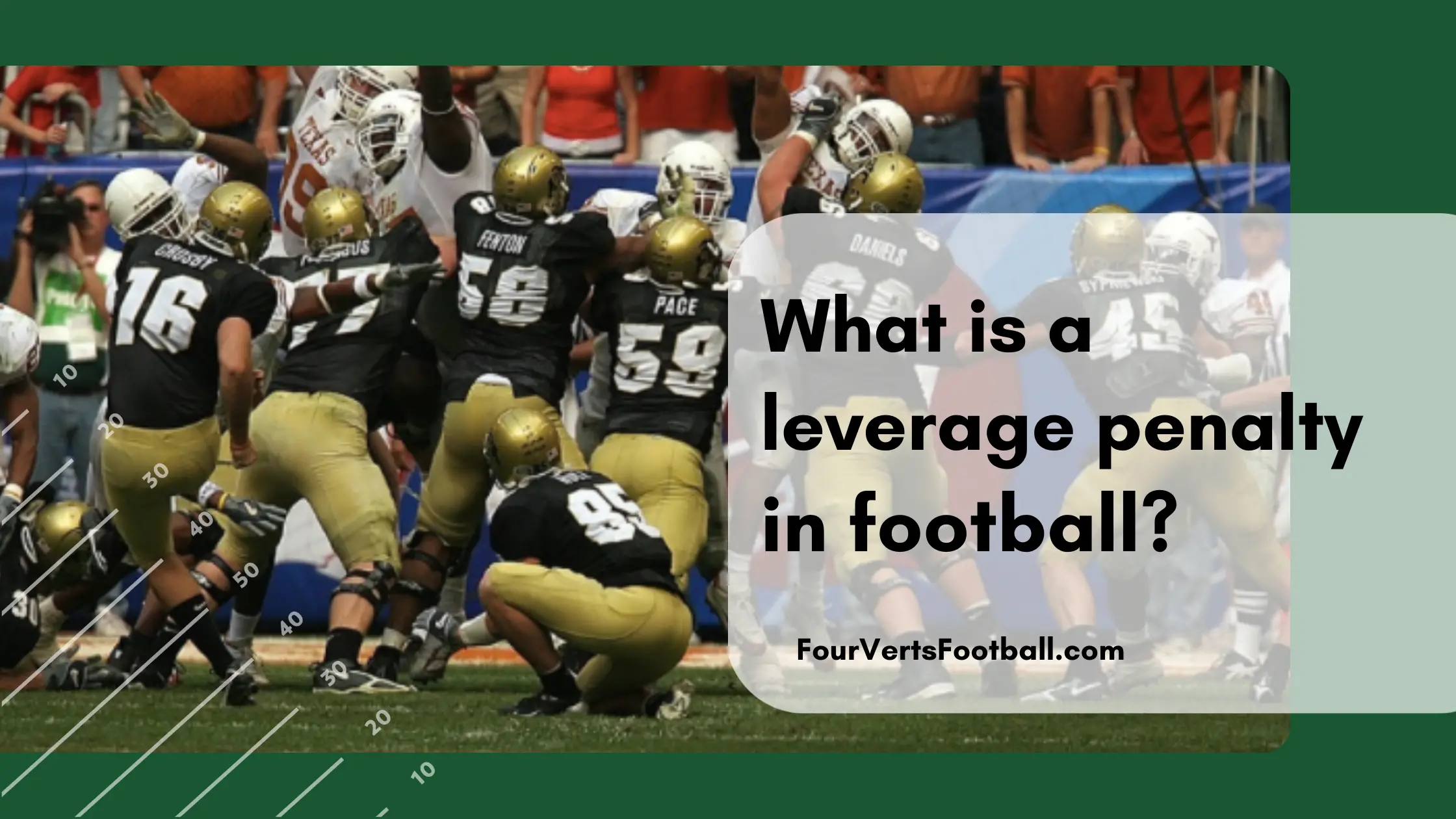Look we get it, no matter how much football you watch there is always going to be a few rules that catch you off guard when watching a football game. This is why we’ve written this article explaining exactly what a leverage penalty is in football.
A leverage penalty is called against the defense when a player intentionally stands on or jumps off a teammate in order to block a field goal or punt.
Variations of this rule are used in the NCAA, high school football, and the NFL
These penalties are incredibly costly because along with the yardage penalty it is going to give the offense an automatic first down.
Breaking Down The Penalty
This penalty is rarely called in football due to the fact players rarely break this rule.
In order to have this penalty called against a player, they will have to noticeably use a teammate’s body in order to get themselves a better chance at blocking a field goal.
The reason players rarely commit this penalty is that it is easily noticed and blatantly illegal. A player attempting to block a field goal knows that climbing onto another player’s back to block a kick is not legal.
Additionally, if a player does successfully block the kick all eyes will be on them. And if they have jumped off another player or are on top of when this will easily be noticed.
The rule itself is in place for two reasons. First player safety and secondly to ensure a fair chance for the field goal kicker.
Player Safety
Climbing onto another player’s back or jumping off another player is going to put you quite high in the air. A player can both injure themselves coming down or land on another player injuring them in the process.
Anytime a player can get significantly high in the air represents increased injury risk. And in today’s game with health being a major factor, this sort of play is not going to fly.
Giving The Kicker A Chance
Imagine for a second that this rule was completely eliminated. This would mean players would be able to stack on each other’s back on field goal attempts in order to block the kick.
This wall of bodies would mean the kicker would have to arch the ball exceptionally high in order to get it over the line of would-be field goal blockers.
This of course is not the kind of football we are accustomed to seeing. In order to keep field goal and punt blocks the way they are the leverage penalty has been established.
Outcome Of A Leverage Penalty
The outcome of a leverage penalty has got to be the most devastating part of this rule. At all levels of football, a leverage penalty has been determined to fit under the unsportsmanlike conduct category.
This means that leverage carries a fifteen-yard penalty and an automatic first down. This is especially tough on the offending team as these penalties almost only occur on fourth downs.
Since the opposing team is kicking or punting the ball. The possession is set to switch to the defending team the next play.
Once a leverage penalty occurs the team will be fifteen yards closer to your endzone. And will have a fresh set of downs.
Other Uses Of Leverage In Football
On top of being this term being a penalty there are also different uses for the term leverage in football.
When covering a player’s leverage refers to your advantage over the other player. If you have inside leverage this means you are controlling the player from his inside shoulder.
While outside leverage may mean you are on his outside shoulder and can force him inside.
Leverage is also a term used in blocking. To have good leverage refers to being in a position in which you can move or control the opposing player’s movements.
Leaping penalty vs leverage penalty
One confusing aspect of leverage penalties in football is that there is a very similar penalty in the NCAA called a leaping penalty.
As we stated earlier in the article this penalty can be called in the NCAA. This is exactly accurate as the difference between a leverage penalty and a leaping penalty are slightly different.
A leverage penalty occurs when a player uses his teammate to help him jump over the offensive line on field goals or extra points.
A leaping penalty on the other hand occurs whenever a player jumps over the offensive line in any manner on a field goal or extra point.
In the NFL is a player rushing the kick jumps the line without contacting anyone it is entirely legal. So long as no teammates are in contact and he does not touch any offensive lineman no flag will be thrown.
In the NCAA the leaping penalty does not allow players to jump the line under any circumstance.
Even if the player is able to cleanly jump over the center and block the kick a penalty will be called. A leaping penalty carries the same outcome as a leverage penalty.
Fifteen penalty yards will be applied and the kicking team will be given an automatic first down.
Conclusion
I hope you enjoyed our guide to understanding the leverage penalty in football. The point behind are articles is to give fans an easy to read breakdown of football.
If you have any questions about this rule at any level of football be sure to let us know.
If you want to learn more check out our guide to the halo rule in football or whether or not you can decline all penalties in football.

